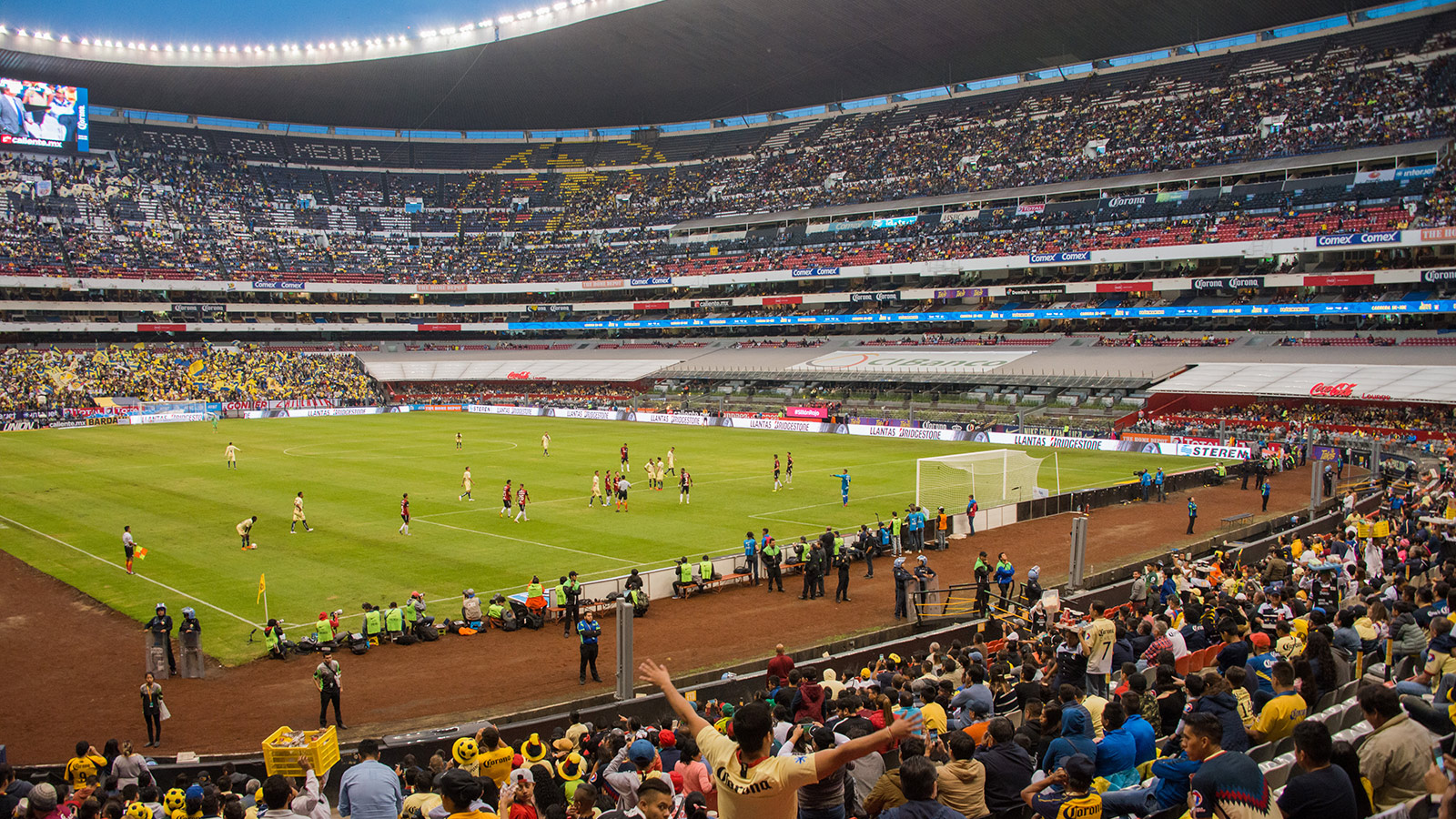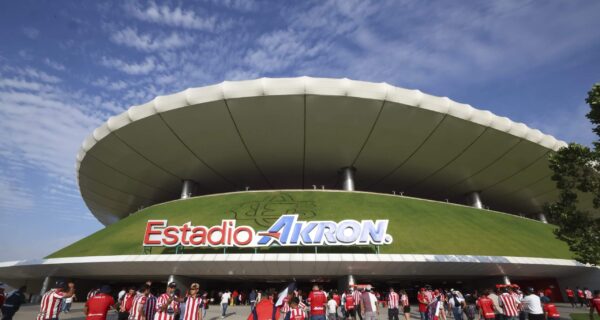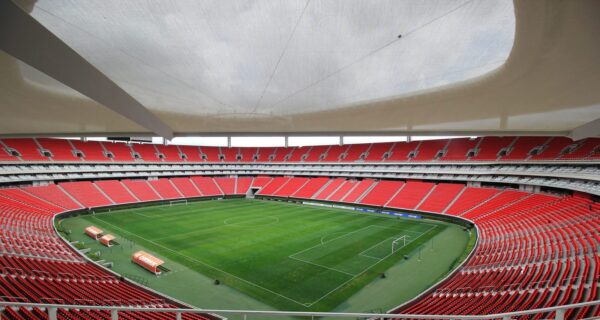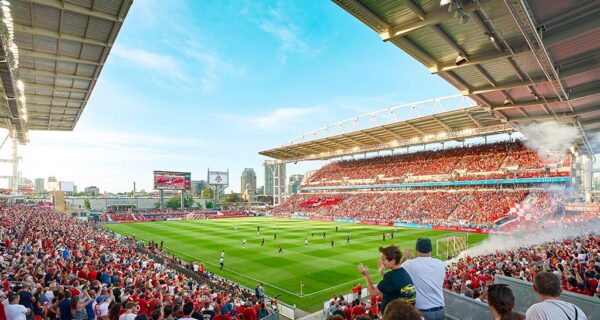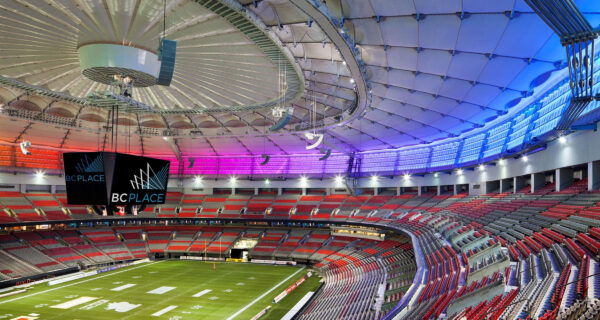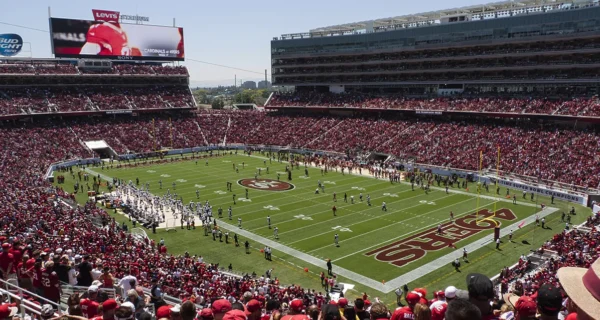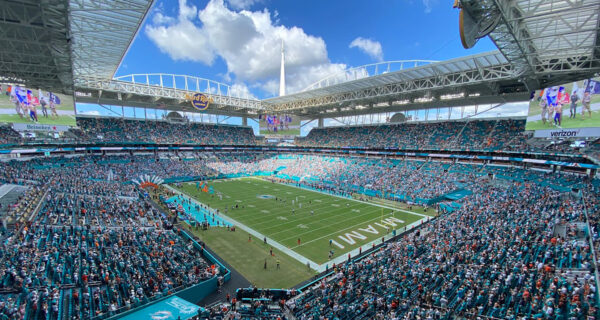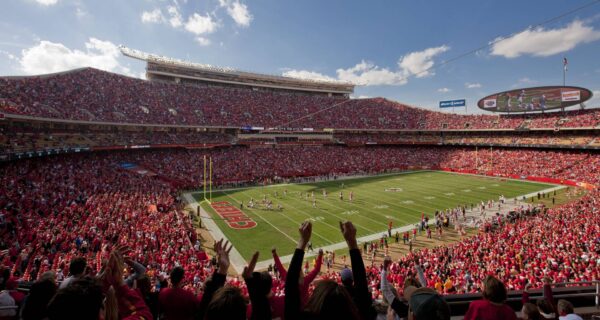Estadio Azteca stands as one of the most iconic football stadiums in the world. The majestic venue holds a special place in football history as the only stadium to host two FIFA World Cup finals.
Located in Mexico City, this legendary stadium continues to attract football fans from across the globe. Tourists and locals alike flock to experience the electric atmosphere that has witnessed some of football’s greatest moments.
History and Significance of Estadio Azteca
Estadio Azteca opened its doors on May 29, 1966, with a friendly match between Club América and Italian club Torino. The stadium’s construction broke ground in 1961 and took approximately five years to complete. Mexican architects Pedro Ramírez Vázquez and Rafael Mijares Alcérreca designed this magnificent structure, drawing inspiration from European stadiums.
The construction cost reached 260 million Mexican pesos, a substantial investment at the time. Builders faced significant challenges during construction, including removing 180,000 cubic meters of volcanic rock from the Xitle volcano. The original goal centered on creating a modern stadium for the 1968 Olympic Games hosted in Mexico City.
Estadio Azteca became internationally famous when it hosted the 1970 FIFA World Cup final, where Brazil defeated Italy 4-1. The stadium cemented its legendary status when it hosted the 1986 World Cup final, with Argentina defeating West Germany 3-2. These events made it the first and only stadium to host two World Cup finals.
The venue witnessed Diego Maradona’s infamous “Hand of God” goal and his incredible “Goal of the Century” during the 1986 quarter-final match between Argentina and England. Football icons Pelé and Maradona both claimed World Cup victories on this hallowed ground, adding to the stadium’s mystique.
Location and Accessibility
Estadio Azteca sits in the Coyoacán borough of Mexico City, specifically in the Santa Úrsula neighborhood. The exact coordinates place it at 19°18′11″N 99°09′02″W. Located approximately 16 kilometers south of Mexico City’s center, the stadium rises 2,200 meters (7,200 feet) above sea level.
The high-altitude location significantly impacts gameplay, giving local teams an advantage over visitors unaccustomed to the thin air. The stadium earned the nickname “El Coloso de Santa Úrsula” (The Colossus of Santa Úrsula) due to its imposing presence in the neighborhood.
Visitors can easily spot the famous “El Sol Rojo” (Red Sun) sculpture by Alexander Calder near the stadium. This massive artwork became part of the “Ruta de la Amistad” (Route of Friendship) art installation created for the 1968 Olympics.
Estadio Azteca Capacity and Seating
Currently, Estadio Azteca boasts a capacity of 87,523 spectators, making it the largest stadium in Latin America and the sixth-largest association football stadium worldwide. The stadium originally held over 100,000 fans when it opened in 1966.
The record attendance reached an astonishing 119,853 during a Mexico vs. Brazil match in July 1968. This record fell during a boxing match between Julio César Chávez and Greg Haugen in February 1993, when 132,247 spectators packed the venue.
Renovations in 2016 reduced the capacity from its original size to improve comfort and safety standards. The seating arrangement features two main tiers separated by a strip of luxury boxes and balconies. The stadium includes 856 executive suites for VIP experiences.
The playing field measures 105m × 68m (344ft × 223ft) and sits 9.5 meters below ground level. The architects designed the lower tier to rest against the slopes, creating excellent sightlines from virtually every seat in the stadium.
Design and Architecture
The architectural design of Estadio Azteca follows an oval shape rather than the rectangular format common in many stadiums. This design choice provides optimal visibility from every seat, with stands gently contoured to ensure excellent views of the action.
Designers initially planned a more rectangular shape but ultimately opted for the oval layout to enhance the spectator experience. The stadium’s structure required 8,000 tons of high-resistance steel rods for the concrete structure and 1,200 tons of laminated steel for the roof construction.
The concrete structure alone weighs an impressive 100,000 tons. The total construction area covers 63,590 square meters. The stadium includes numerous ramps and tunnels that allow the venue to be evacuated in just 18 minutes if necessary.
The roof covers most seating areas, with floodlights positioned along its edge. Two large video screens sit behind the goals to enhance the spectator experience. The field features high-quality Kikuyu grass that withstands Mexico City’s climate and intensive use.
Transportation Options to Estadio Azteca
Getting to Estadio Azteca provides visitors multiple convenient options. The most popular and affordable method involves taking the Mexico City Metro Line 2 (Blue Line) to Tasqueña station, then transferring to the Xochimilco Light Rail that takes you directly to Estadio Azteca station.
The light rail journey from Tasqueña to Estadio Azteca takes approximately 15 minutes, with trains running every 10 minutes. This option proves popular among locals and tourists looking to avoid traffic congestion on match days.
Bus service offers another economical alternative. Several routes connect to the stadium, with buses departing from Base Cetram Taxqueña to Tlalpan y Estadio Azteca every 5 minutes. The bus journey typically takes around 22 minutes, depending on traffic conditions.
For those preferring more direct transportation, taxis and ride-sharing services like Uber provide door-to-door service. The journey from central Mexico City takes about 13 minutes without traffic, though travel times increase significantly during peak hours and event days.
Visitors driving to the stadium can use the on-site parking facilities with 530 spaces. The parking areas open four hours before events, but spaces fill quickly for major matches. The stadium sits approximately 15.3 kilometers from downtown Mexico City by road.
Stadium Amenities and Features
Estadio Azteca provides numerous amenities to enhance the spectator experience. The facility includes three first-aid stations located throughout the venue to handle medical emergencies. These stations operate continuously during events with trained medical personnel.
Security measures include extensive CCTV camera coverage monitored from a central command post. The stadium employs various security personnel, including Mexico City Auxiliary Police, private security, and supervisors to ensure spectator safety.
The venue features modern restroom facilities throughout all levels. The stadium upgraded its electronic systems in recent years, including the installation of Panasonic scoreboards and a sophisticated 30-million-euro hanging track camera system that provides comprehensive field coverage.
Accessibility accommodations include designated areas for wheelchair users throughout the stadium. The stadium offers guided tours seven days a week, allowing visitors to explore areas including locker rooms, press boxes, and the pitch itself.
VIP Areas and Premium Experiences
Estadio Azteca features several premium seating options for those seeking enhanced comfort. The stadium offers four main types of VIP boxes known locally as “palcos.” These exclusive areas provide superior views and additional amenities.
Palcos Club provides panoramic views of the field with included food and beverage service. These premium spaces cost approximately 1,600 pesos per person. Asientos Club offers field-level seating with access to lounge areas for socializing before, during, and after events.
Palco Compartido delivers a high-end VIP experience with exclusive amenities for 3,200 pesos. Palco Ejecutivos includes prime field visibility plus private bathrooms and dedicated parking spaces. The largest available boxes accommodate up to 15 people.
The stadium recently introduced unique dining experiences where guests enjoy gourmet meals directly on the playing field. This special event includes a four-course dinner prepared by renowned chefs, accompanied by an open bar and entertainment for 2,250 pesos (approximately €120).
Food and Dining Options
Food options abound throughout Estadio Azteca, with numerous concession stands serving Mexican and international fare. Visitors find popular items including pizza, wings, tacos, tortas (Mexican sandwiches), popcorn, and the surprisingly popular Maruchan instant noodles.
The Coca-Cola section offers a premium culinary experience with unlimited tacos, burgers, beer, chips, soda, and nachos included in the ticket price. This all-you-can-eat option proves popular among fans looking to maximize their stadium experience.
Outside food and beverages cannot enter the stadium, as security checks all bags at entrance points. Small water bottles sometimes receive permission, but outside alcohol faces strict prohibition. The stadium sells alcoholic beverages at designated concession stands.
Street food vendors surround the stadium exterior before and after events. Many locals recommend trying these authentic Mexican food options, which typically offer better value and flavor than inside concessions. Look for stands with long lines, as these generally indicate the best quality.
Recent Changes and Renovations
Estadio Azteca underwent several renovations throughout its history, with significant updates in 1986, 1999, 2013, and 2016. The 2016 renovation significantly reduced seating capacity from over 100,000 to the current 87,523 to improve comfort and safety standards.
A major change occurred in April 2025 when the stadium signed a naming rights deal with Banorte, one of Mexico’s largest banks. The official name became “Estadio Banorte,” though most people continue using the traditional “Estadio Azteca” name.
The stadium currently undergoes modernization in preparation for the 2026 FIFA World Cup. These upgrades focus on improving visitor facilities, technology infrastructure, and bringing all aspects up to FIFA’s exacting standards for the tournament.
Club América, the stadium’s primary tenant since 1966, temporarily relocated during parts of the renovation process. Cruz Azul, another frequent tenant, also sought alternative venues during construction periods. This demonstrates the significant scope of the ongoing improvements.
FIFA World Cup 2026 and Future Events
The 2026 FIFA World Cup will make Estadio Azteca the first stadium to host World Cup matches in three different tournaments. Mexico will co-host the competition alongside the United States and Canada. Estadio Azteca secured the prestigious opening match of the tournament.
Beyond football, the stadium hosts various events including concerts, religious gatherings, and NFL games. The NFL International Series brought American football to the venue, expanding its international sporting significance beyond soccer.
The stadium serves as home to Club América and regularly hosts matches for the Mexican national football team. Its versatility and massive capacity make it an ideal venue for major events that attract large crowds in Mexico City.
After the 2026 World Cup, stadium officials plan additional modernization efforts to ensure the facility remains world-class for decades to come. These plans include technological upgrades and sustainability improvements to reduce environmental impact.
FAQs
1. What is the current capacity of Estadio Azteca?
Estadio Azteca currently holds 87,523 spectators. The stadium previously accommodated over 100,000 fans before renovations in 2016 reduced capacity to improve comfort and safety standards. It remains the largest stadium in Latin America and ranks sixth among football stadiums worldwide.
2. How can I reach Estadio Azteca using public transportation?
The easiest way involves taking Mexico City Metro Line 2 (Blue Line) to Tasqueña station, then transferring to the Xochimilco Light Rail to Estadio Azteca station. The light rail journey takes approximately 15 minutes with trains running every 10 minutes throughout the day.
3. Can I bring food or drinks into Estadio Azteca?
Estadio Azteca prohibits outside food and beverages. Security personnel check all bags at entrance points. Small water bottles occasionally receive permission, but outside alcohol faces strict prohibition. The stadium offers numerous food and beverage options at concession stands throughout the venue.
4. Does Estadio Azteca offer stadium tours?
Yes, Estadio Azteca offers guided tours seven days a week. Tours include visits to locker rooms, press areas, and the playing field. Ticket sales and tour access operate through Gate 2 of the stadium. Tour schedules update monthly on the official stadium website.
5. What famous football matches has Estadio Azteca hosted?
Estadio Azteca hosted the 1970 World Cup final (Brazil vs. Italy), the 1986 World Cup final (Argentina vs. West Germany), and the famous 1986 quarter-final featuring Maradona’s “Hand of God” goal and “Goal of the Century” (Argentina vs. England).
6. What types of VIP experiences does the stadium offer?
The stadium features four premium seating options: Palcos Club (panoramic views with food and drinks), Asientos Club (field-level seating with lounge access), Palco Compartido (exclusive VIP experience), and Palco Ejecutivos (premium views with private bathrooms and parking).
7. How high above sea level is Estadio Azteca located?
Estadio Azteca sits at an altitude of 2,200 meters (7,200 feet) above sea level. This high elevation affects gameplay and provides local teams an advantage over visitors unaccustomed to the thin air conditions found in Mexico City.
8. What food options can I find inside the stadium?
Food options include pizza, wings, tacos, tortas (Mexican sandwiches), popcorn, and Maruchan instant noodles. The Coca-Cola section offers an all-inclusive experience with unlimited tacos, burgers, beer, chips, soda, and nachos included with ticket purchase.
9. When was Estadio Azteca built and who designed it?
Estadio Azteca opened on May 29, 1966, after construction began in 1961. Mexican architects Pedro Ramírez Vázquez and Rafael Mijares Alcérreca designed the stadium, drawing inspiration from various European venues to create a world-class facility for Mexico.
10. Which teams regularly play at Estadio Azteca?
Club América has called Estadio Azteca home since its opening in 1966. The Mexican national football team regularly plays important matches at the venue. Other clubs including Cruz Azul, Necaxa, and Atlante have used the stadium as their home ground at various times.

